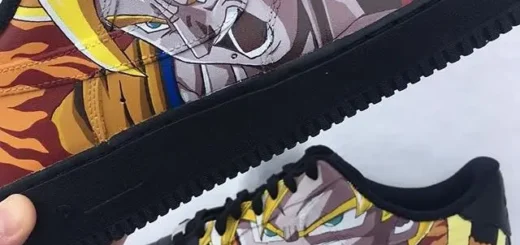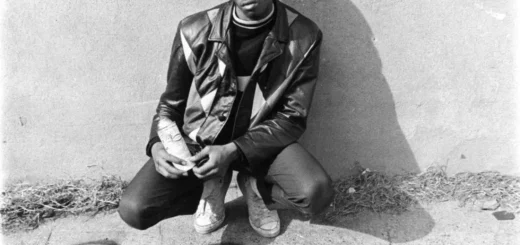Graffiti Cap Guide: Unlock Street Art Secrets & Top Picks
When I first dipped my toes into the vibrant world of street art, I quickly learned that a graffiti cap isn’t just a cap—it’s the key to unleashing your full creative potential on a wall. Every street artist knows that the cap you choose can make or break your piece.
But with a dizzying array of caps available, it can be tough to know which one will give you the precision, flow, and style you’re after. That’s why I’m here to guide you through the essentials of picking the perfect graffiti cap for your next masterpiece.
Understanding the Importance of a Graffiti Cap
When I’m out there creating, I’ve learned that the right graffiti cap is as crucial as my spray paint. It directs the spray, shapes the line, and ultimately, can be the difference between a good piece and a great one. The cap is the bridge between idea and execution, where control meets creativity.
Graffiti caps govern the dispersion of paint. With the correct cap, lines can range from razor-sharp to broad and misty, creating both intricate details and dynamic fades. This versatility is why experienced artists collect a variety of caps, knowing that each has its purpose. For a piece to come alive, each stroke and shade needs intention behind it – the cap gives me that precision.
Moreover, the cap’s impact on flow rate should not be underestimated. Different caps regulate the amount of paint flow, from slow drippings ideal for fine lines to faster flows necessary for filling large areas quickly. A cap that delivers a consistent flow is paramount, as it can help avoid drips that might otherwise ruin the crispness of a line or the smoothness of a gradient.
Beyond the aesthetic control, the physical impact of using the right cap is significant too. By choosing a cap that suits my style and hand movement, I reduce the strain on my fingers during prolonged painting sessions. Less fatigue means I can focus on my design and stay immersed in the moment for longer, which is essential when I’m working on larger or more complex pieces.
Here’s a quick rundown of cap types I might choose from:
- Skinny Caps: for fine line work and detail
- Fat Caps: for filling in larger areas rapidly
- Soft Caps: for smooth gradients and lower pressure application
- Specialty Caps: for unique patterns and effects
Each cap serves a function in my toolkit, allowing me to tailor my approach to the surface, the scale of the work, and the visual effects I’m aiming to create. It’s about finding the right balance and using the tools at my disposal to bring my vision to fruition.
Different Types of Graffiti Caps

As a street artist, it’s crucial to know your tools. This knowledge not only enhances your work but also brings efficiency to your creative process. Graffiti caps, often an overlooked piece of the art supply puzzle, come in a variety of types, each serving a specific purpose.
Skinny Caps are designed for fine line work and small details. They allow for precise control, making them ideal for sharp edges and intricate patterns. The spray emitted from skinny caps is narrow, which means they’re the go-to for outlines and highlights.
Fat Caps are the perfect counterpart to skinny caps. As the name suggests, they release a wider radius of paint, perfect for filling in large areas. Fat caps aren’t just time-savers; they’re essential for creating bold blocks of color and dynamic backdrops.
For versatility, Soft Caps may be your best friend. These caps create a medium-width spray that’s not too fine and not too broad. It’s a cap that I often use when transitioning from detailed work to broader strokes. Soft caps provide a spray that’s manageable and less aggressive, allowing for subtle build-up of colors and tones.
To achieve an effect reminiscent of calligraphy, the Calligraphy Cap shines. Its oval-shaped spray pattern can lay down some truly unique lines reminiscent of brush strokes, giving pieces a flow that’s hard to match with the standard cap varieties.
Lastly, don’t overlook Specialty Caps which strut their stuff with distinct patterns and effects. These can range from caps that offer a stencil-like precision to those that splash like a burst, mimicking drips or splatter, without the unwanted mess.
For a visual person like myself, the proof is in the practice. Experiment with these caps to understand the nuances and how they can elevate your artwork. With the right cap on your can, you’ll not only express your vision with precision but also make the painting experience far more enjoyable.
While it may seem like a mere detail, the interplay of cap and can has a major impact on the artwork’s final appearance. Each cap type unlocks a different aspect of your creativity, hence selecting the right one for the effect you’re aiming for is like choosing the right brush for a stroke in a masterpiece.
Choosing the Right Cap for Your Style

As a street artist, I’ve found that the right cap choice is crucial to my work’s effectiveness. It’s not just about the paint or the wall; the cap is my primary tool for control and expression. There are a few key considerations when selecting a cap that best suits your artistic signature.
First, understand the pressure of your favorite cans. Some caps work better with high-pressure cans for swift, broad strokes while others thrive with low-pressure cans for detail work. I always match my caps with the pressure level to ensure precision.
Next, think about line width. Here’s what I consider:
- Skinny Caps: Ideal for outlines and detail work
- Fat Caps: Perfect for quick fills and large, bold lines
- Soft Caps: Offer great control for intermediate widths
Don’t forget about versatility. Some caps can produce varying line widths based on the pressure applied and the distance from the surface. I keep a variety of these around so I can adapt to any scenario.
The durability of caps also matters. A cap that clogs easily can break my flow, so I opt for caps that offer a consistent output over longer periods.
Experimentation is the name of the game in graffiti art. I’m always trying new cap and can combinations to discover unique textures and effects. While I maintain a core set of go-to caps, I don’t shy away from testing out specialty caps for that unexpected touch.
Finally, never underestimate the importance of comfort. The cap should feel right in your hand because a comfortable grip can lead to more controlled and prolonged spraying without strain.
Here are a few types of caps I find essential in my kit:
- Banana Cap: For smooth lines and moderate width
- NY Fat Cap: A traditional choice for a reason, it’s versatile and reliable
- German Outline Cap: Precision is its forte, allowing for sharp, defined lines
I constantly assess the caps I use to ensure they’re aligning with the evolving style of my work. As I push my artistic boundaries, my cap choices evolve parallelly, often unlocking new ways to convey my visions on the streets.
Tips for Using Graffiti Caps Effectively

When diving into the world of street art, knowing how to use graffiti caps effectively is just as critical as selecting them. Here are some hands-on tips that I’ve learned along the way to help you get the most out of your caps.
Test Your Caps Before Using Them On Your Piece
Always begin by testing caps on a spare surface to understand the spray pattern and flow. This will save you from unwanted surprises when you’re working on your final piece.
Keep Your Caps Clean
Clogged caps can ruin your work. Soak used caps in thinner after use or frequently wipe the nozzle clean to maintain a smooth flow.
Switch Caps According to the Artwork’s Requirements
You wouldn’t use a chisel to screw a nut, so don’t stick to one cap for all your work. Pick a cap that complements the technique you’re about to use—whether it’s a skinny cap for detail or a fat cap for coverage.
Learn to Control the Distance
The distance from the surface greatly affects the outcome. Hold the can close for sharp, defined lines, and further away for broader coverage and soft edges.
Mind the Weather
Temperature and humidity can affect your spray paint’s behavior. On a hot day, paint dries quickly, which might be good for quick layering. Conversely, in cold weather, you might encounter a slower drying time and potential dripping.
Practice Makes Perfect
Never underestimate the power of practice. The more I work with different caps and sprays, the better I understand how to manipulate them to achieve the desired effect. Here’s a quick rundown:
- Skinny Caps – for outlines and detailed work
- Fat Caps – to fill large areas swiftly
- Soft Caps – for a versatile approach and blending
- Specialty Caps – when I want to add a unique texture or pattern
Mix and match, experiment with brands, and always reflect on each session. What worked? What didn’t? And how can I adjust my technique for next time? It’s all part of the evolving journey as a graffiti artist.
Remember, there’s no one-size-fits-all approach here. It’s about finding the methods and tools that resonate with your style. Keep pushing the boundaries, keep experimenting, and you’ll see your style transform and your efficiency soar.
The Top Graffiti Caps in the Market

When it comes to selecting the top graffiti caps available, there are a few key names that dominate the scene. Here’s a brief rundown of the most sought-after caps and why they stand out:
Skinny Caps: Known for their precision, skinny caps are a must-have for detailed work and sharp lines. They’re perfect for outlining and work wonders for artists aiming for controlled, fine strokes.
Fat Caps: As the name suggests, fat caps are essential for covering large areas quickly. Offering a wider spray, I find them indispensable for creating bold, thick lines and filling in backgrounds with ease. They’re a time-saver and a tool that efficiently adds impact to any piece.
Banana Caps: These caps offer a spray that’s flared at the edges, giving a softer line than skinny caps but more precision than fat caps. I love using them for blending colors and creating gradient effects.
Let’s take a peek at some of the leading brands that provide these go-to caps:
- Montana Level Caps: I’ve gravitated towards Montana for their variety of spray widths, allowing for nuanced control over line work.
- NY Fats: They’re an old-school favorite for their versatility with different paint brands and are known for their reliable, clean lines.
- German Outline Caps: These are praised by artists for the crisp and clean lines they produce, which is great for intricate work.
Here’s a quick comparison table of the caps to aid in your selection:
| Cap Type | Line Width | Best for |
|---|---|---|
| Skinny Caps | Fine to Medium | Detailing and Outlining |
| Fat Caps | Medium to Wide | Filling and Bold Lines |
| Banana Caps | Medium to Soft | Blending and Gradient Effects |
My own experience tells me it’s not just about having these caps in your arsenal—it’s about knowing when and how to use them to achieve your visionary goals. Remember, the best cap often depends on your personal style and the particular needs of the project at hand. Therefore, it’s worth the effort to familiarize yourself with each type and brand of cap, as they can greatly influence the outcome of your artwork.



